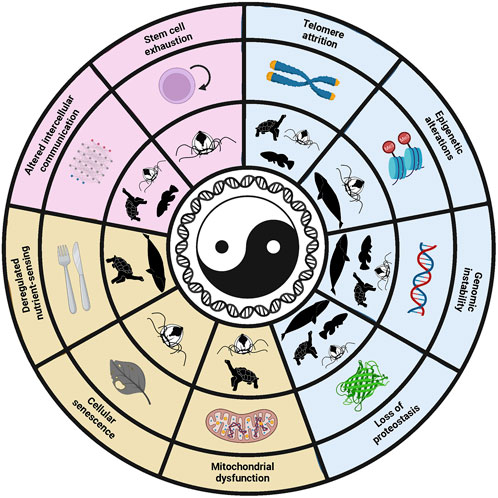
The hallmarks of aging as a conceptual framework for health and longevity research

In a comprehensive review led by José M. P. Freije from the Universidad de Oviedo, Spain, the transformative impact of The Hallmarks of Aging framework in understanding longevity was explored in depth. Originally proposed in 2013 and recently updated to include three new hallmarks, this framework categorizes aging into primary, antagonistic, and integrative factors, offering a structured approach to aging research.
The primary hallmarks, including genomic instability, telomere attrition, epigenetic alterations, and loss of proteostasis, represent fundamental factors contributing to cellular aging processes. Meanwhile, antagonistic hallmarks like deregulated nutrient-sensing, mitochondrial dysfunction, and cellular senescence exhibit dual roles, initially beneficial but becoming detrimental with age. Integrative hallmarks such as stem cell exhaustion and altered intercellular communication signify disruptions in tissue homeostasis, indicating where aging surpasses the body’s repair capacity.
Researchers have leveraged the Hallmarks framework to explore rejuvenation strategies across various disciplines. Studies on cellular reprogramming, metabolic interventions, and targeting transposons have shown promising results in extending lifespan and improving healthspan in animal models.
Moreover, the Hallmarks framework has influenced diverse fields beyond aging research, including investigations into progeroid syndromes, age-related diseases, and even COVID-19 research. By providing a systematic approach to understanding aging-related processes, the Hallmarks have facilitated the development of targeted therapeutic strategies.
As research progresses, new candidates for hallmarks of aging continue to emerge, reflecting ongoing advancements in the field. However, researchers emphasize the need for careful consideration when incorporating new hallmarks to maintain the framework’s integrity and utility.
In summary, the Hallmarks of Aging remain vital for pursuing healthier, longer lives, driving innovation and collaboration across interdisciplinary research efforts.
Figure Description:
Hallmarks of aging involved in lifespan modulation of short- and long-lived species, as well as the cellular plasticity of the immortal cnidarian T. dohrnii. The shadows indicate which hallmarks are related with lifespan or cellular plasticity of the species. It can be appreciated that some of the hallmarks modulate the lifespan of both long- and short-lived species, pointing out that the same pathways can shorten or expand lifespan depending on the context.
© Figure: Tartiere AG, Freije JMP and López-Otín C Front. Aging (2024)
Did you like the news ? Please share it with your circle.